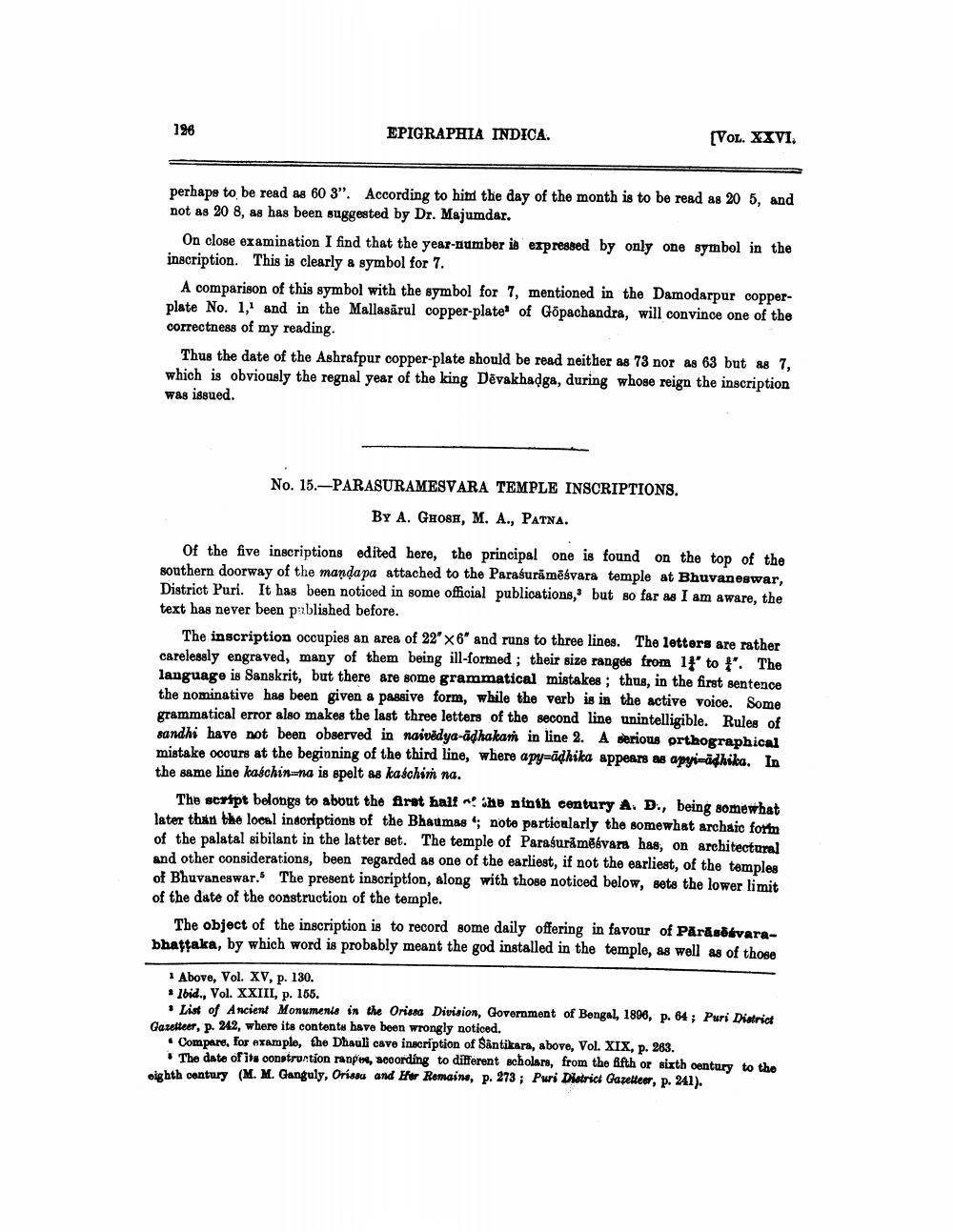________________
196
EPIGRAPHIA INDICA.
[VOL. XXVI.
perhaps to be read as 60 3". According to him the day of the month is to be read as 20 5, and not as 20 8, as has been suggested by Dr. Majumdar.
On close examination I find that the year-number is expressed by only one symbol in the inscription. This is clearly & symbol for 7.
A comparison of this symbol with the symbol for 7, mentioned in the Damodarpur copperplate No. 1,' and in the Mallasărul copper-plate' of Gopachandra, will convince one of the correctness of my reading.
Thus the date of the Ashrafpur copper-plate should be read neither as 73 nor as 63 but as 7, which is obviously the regnal year of the king Dēvakhadga, during whose reign the inscription was issued.
No. 15.-PARASURAMESVARA TEMPLE INSCRIPTIONS.
BY A. GHOSH, M. A., PATNA.
of the five inscriptions edited here, the principal one is found on the top of the southern doorway of the mandapa attached to the Parasurămēsvara temple at Bhuvaneswar, District Puri. It has been noticed in some official publications, but so far as I am aware, the text has never been published before.
The inscription occupies an area of 22" x 6" and runs to three lines. The letters are rather carelessly engraved, many of them being ill-formed; their size ranges from 14' to t". The language is Sanskrit, but there are some grammatical mistakes ; thus, in the first sentence the nominative has been given a passive form, while the verb is in the active voice. Some grammatical error also makes the last three letters of the second line unintelligible. Rules of sandhi have not been observed in naivedya-ādhakari in line 2. A serious prthographical mistake occurs at the beginning of the third line, where apy=ādhika appears as apyinādhika. In the same line kaschin=na is spelt as kaschin na.
The script belongs to about the first half the ninth century A. D., being somewhat later than the local inscriptions of the Bhaumas; note particularly the somewhat archaic form of the palatal sibilant in the latter set. The temple of Parasurămēsvara has, on architectural and other considerations, been regarded as one of the earliest, if not the earliest, of the temples of Bhuvaneswar. The present inscription, along with those noticed below, sets the lower limit of the date of the construction of the temple.
The object of the inscription is to record some daily offering in favour of Päräsökvarabhattaka, by which word is probably meant the god installed in the temple, as well as of those
1 Above, Vol. XV, p. 130. * Ibid., Vol. XXIII, p. 165.
List of Ancient Monuments in the Orissa Division, Government of Bengal, 1896, p. 64; Puri District Gazetteer, p. 242, where its contents have been wrongly noticed.
• Compare, for example, the Dhauli cave inscription of Santikara, above, Vol. XIX, p. 263.
The date of its constrution ranpes, according to different scholars, from the fifth or sixth oentury to the eighth century (M. M. Ganguly, Orissu and Her Romains, p. 273; Puri District Gazetteer, p. 241).




